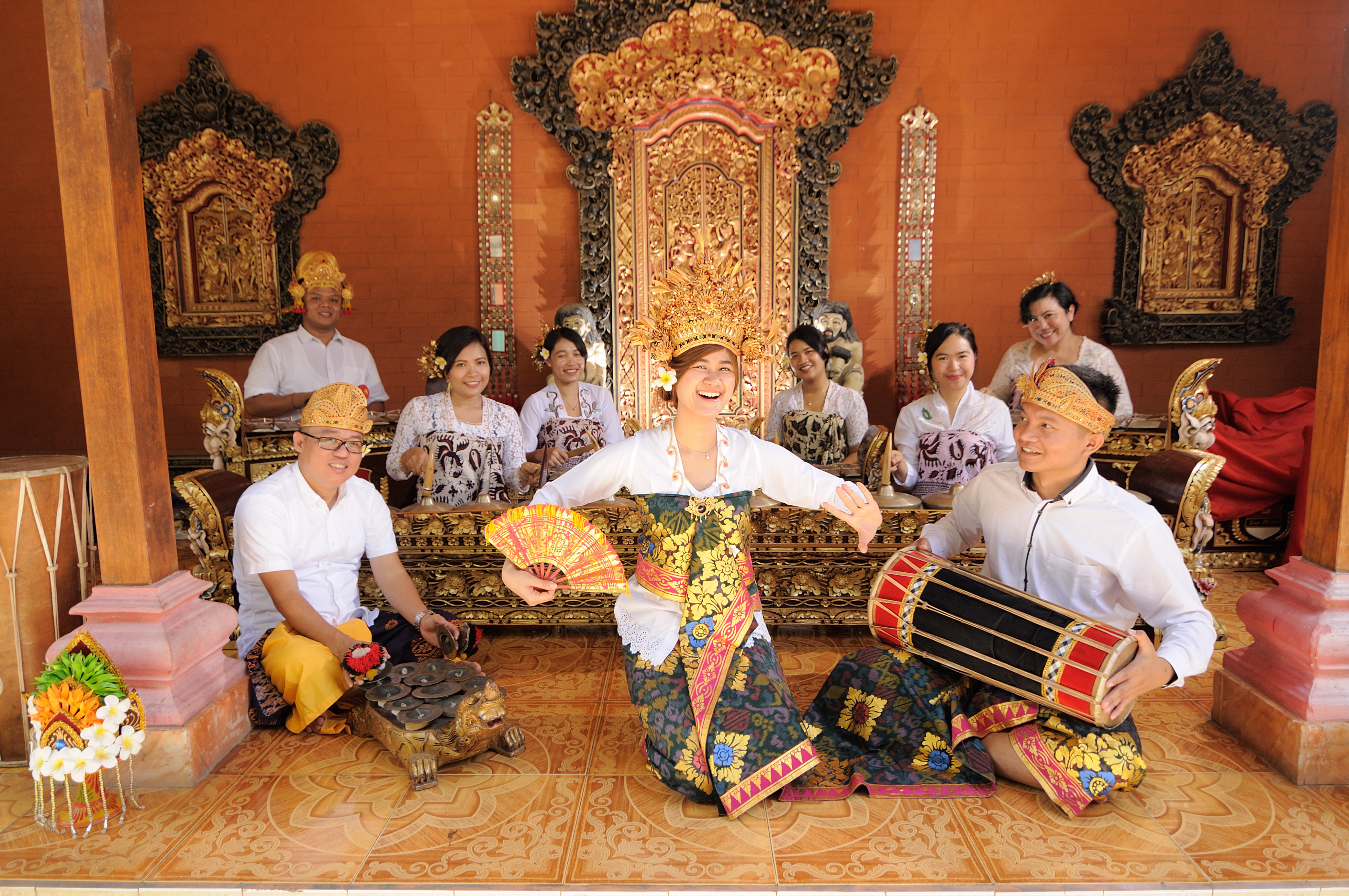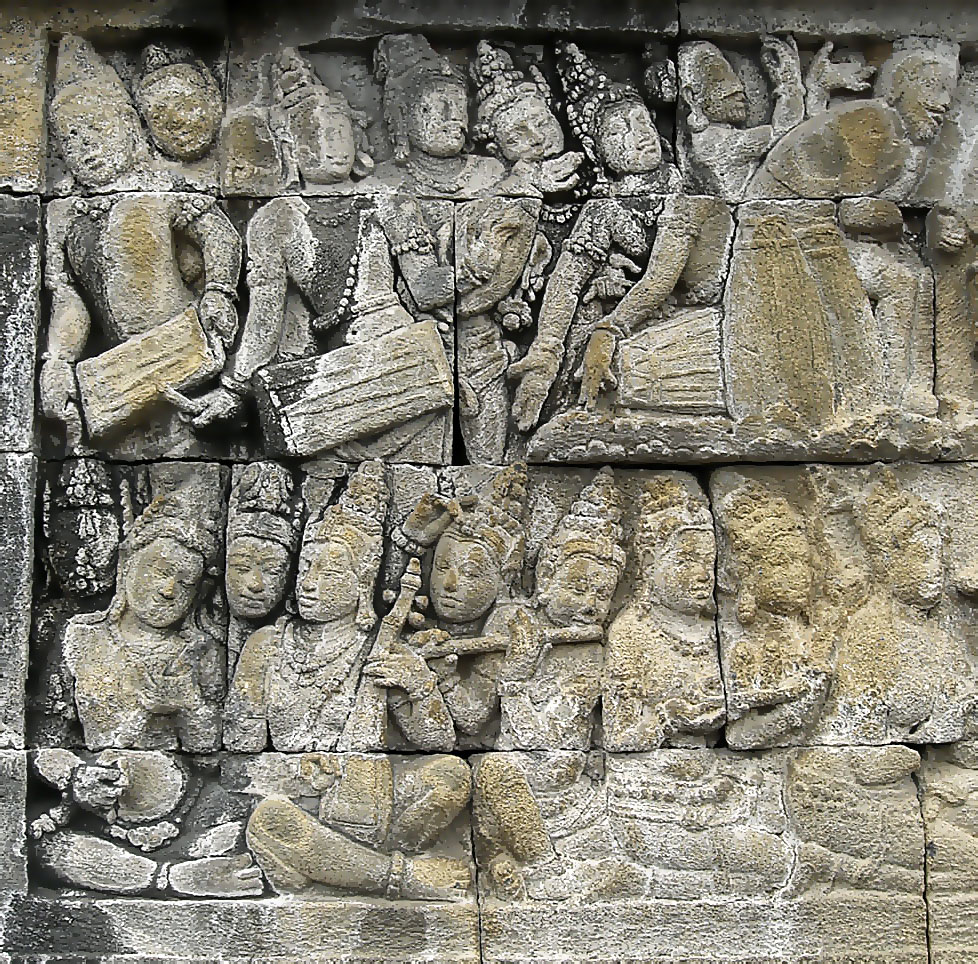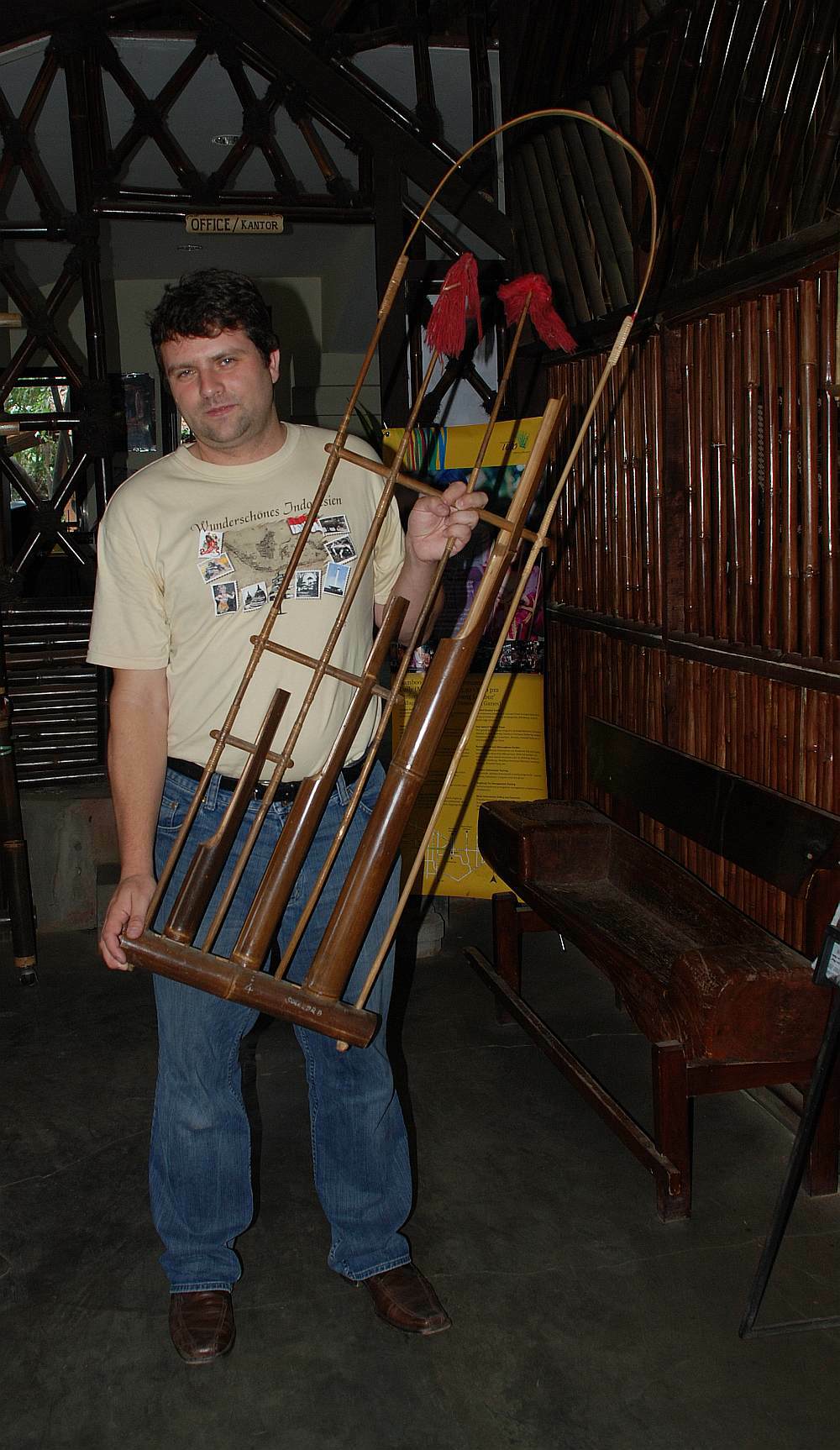|
Beleganjur
''Gamelan beleganjur'' (also spelled ''balaganjur'') is one of the most popular styles of gamelan music in Bali. Its closest Western analogue is probably the Western military band. History Like the Western military band, the original purpose of ''beleganjur'' was to accompany armies into battle and strike fear into the hearts of the enemy. In fact, ''gamelan beleganjur'' literally means "gamelan of walking warriors". Also like its Western counterpart, today ''beleganjur'' has mostly lost its association with warfare, and instead is associated with festivals, contests, and cremation ceremonies - modeled on the modern marching band and the Javanese tanjidor tradition to the west. Although the origin of ''beleganjur'' is uncertain, it bears resemblance to the now rare '' gamelan gong bheri''. Instrumentation The most primitive ''beleganjur'' ensemble, known as ''bebatelan'', consisted of only nine instruments: * one "great gong": ''gong ageng''; * one secondary gong, with sunken ... [...More Info...] [...Related Items...] OR: [Wikipedia] [Google] [Baidu] |
Michael Bakan
Michael Bakan is a professor of ethnomusicology at Florida State University and director of the Balinese gamelan ensemble ''Sekaa Gong Hanuman Agung'' ("Gamelan Club of the Great Hanuman"). He wrote ''Music of Death and New Creation: Experiences in the World of Balinese Gamelan Beleganjur'', a book said to have "elevated gamelan beleganjur to the level of the much better known gong kebyar". Michael is the brother of noted Canadian legal theorist Joel Bakan Joel Conrad Bakan (born 1959) is an American-Canadian writer, jazz musician, filmmaker, and professor at the Peter A. Allard School of Law at the University of British Columbia. Born in Lansing, Michigan, and raised for most of his childhood in .... References American ethnomusicologists Living people Florida State University faculty Year of birth missing (living people) {{musicologist-stub ... [...More Info...] [...Related Items...] OR: [Wikipedia] [Google] [Baidu] |
Reyong
The reyong (also spelled reong) is a musical instrument used in Balinese gamelan. It consists of a long row of metal gongs suspended on a frame. In gamelan gong kebyar, it is played by four players at once, each with two mallets. Often the individual pots can be removed from the frame and played individually as bonang in beleganjur. See also * Gamelan * Music of Bali The Music of Bali, Bali is an Indonesian island that shares in the gamelan and other Indonesian musical styles. Bali, however, has its own techniques and styles, including kecak, a form of singing that imitates the sound of monkeys. In addit ... Further reading * Indonesian musical instruments Gongs Gamelan instruments {{Idiophone-instrument-stub ... [...More Info...] [...Related Items...] OR: [Wikipedia] [Google] [Baidu] |
Indonesia
Indonesia, officially the Republic of Indonesia, is a country in Southeast Asia and Oceania, between the Indian Ocean, Indian and Pacific Ocean, Pacific oceans. Comprising over List of islands of Indonesia, 17,000 islands, including Sumatra, Java, Sulawesi, and parts of Borneo and New Guinea, Indonesia is the world's largest archipelagic state and the List of countries and dependencies by area, 14th-largest country by area, at . With over 280 million people, Indonesia is the world's List of countries and dependencies by population, fourth-most-populous country and the most populous Islam by country, Muslim-majority country. Java, the world's List of islands by population, most populous island, is home to more than half of the country's population. Indonesia operates as a Presidential system, presidential republic with an elected People's Consultative Assembly, legislature and consists of Provinces of Indonesia, 38 provinces, nine of which have Autonomous administrative divisi ... [...More Info...] [...Related Items...] OR: [Wikipedia] [Google] [Baidu] |
Suling
The suling ( Sundanese: ) is a musical instrument of the Sundanese people in Indonesia. It is used in the Degung ensemble. Bamboo ring flute can also be found in Southeast Asia, especially in Brunei, Indonesia, Malaysia, the Philippines and Singapore. Construction Sulings are made mainly of ''tamiang'' bamboo (''Schizostachyum blumei'', Nees), a long, thin-walled bamboo tube. The mouthpiece of the suling is circled with a thin band made of rattan near a small hole. Playing method To play the suling, performers blow into a gap between the rattan band and the bamboo tube at one end of the instrument. There are two factors that affect a fine suling's tone: #Fingering position. #Speed of the airflow blown by the mouth. This factor also should be supported with the position of the mouth around the blowing hole. The fingering position changes the wavelength of sound resonance inside the suling's body. Depending on the distance of nearest hole to the suling's head, different notes c ... [...More Info...] [...Related Items...] OR: [Wikipedia] [Google] [Baidu] |
Music Of Bali
The Music of Bali, Bali is an Indonesian island that shares in the gamelan and other Indonesian musical styles. Bali, however, has its own techniques and styles, including kecak, a form of singing that imitates the sound of monkeys. In addition, the island is home to several unique kinds of gamelan, including the gamelan jegog, gamelan gong gede, gamelan gambang, gamelan selunding and gamelan semar pegulingan, the cremation music angklung and the processional music bebonangan. Modern popular styles include gamelan gong kebyar, dance music which developed during the Dutch occupation and 1950s era joged bumbung, another popular dance style. In Balinese music you can also hear metallophones, gongs and xylophones. Characteristics Balinese music can be compared to Javanese music, especially that of the pre-Islamic period. During that time, Javanese tonal systems were imported to Bali. Balinese gamelan, a form of Indonesian classical music, is louder, swifter and m ... [...More Info...] [...Related Items...] OR: [Wikipedia] [Google] [Baidu] |
University Of Chicago Press
The University of Chicago Press is the university press of the University of Chicago, a Private university, private research university in Chicago, Illinois. It is the largest and one of the oldest university presses in the United States. It publishes a wide range of academic titles, including ''The Chicago Manual of Style'', numerous academic journals, and advanced monographs in the academic fields. The press is located just south of the Midway Plaisance on the University of Chicago campus. One of its quasi-independent projects is the BiblioVault, a digital repository for scholarly books. History The University of Chicago Press was founded in 1890, making it one of the oldest continuously operating university presses in the United States. Its first published book was Robert F. Harper's ''Assyrian and Babylonian Letters Belonging to the Kouyunjik Collections of the British Museum''. The book sold five copies during its first two years, but by 1900, the University of Chicago Pr ... [...More Info...] [...Related Items...] OR: [Wikipedia] [Google] [Baidu] |
Gong Kebyar
Gamelan gong kebyar is a style or genre of Balinese gamelan music of Indonesia. ''Kebyar'' means "to flare up or burst open", and refers to the explosive changes in tempo and dynamics characteristic of the style. Gong kebyar music is based on a five-tone scale called ''pelog selisir'' (tones 1, 2, 3, 5, and 6 of the 7-tone pelog scale), and is characterized by brilliant sounds, syncopations, sudden and gradual changes in sound colour, dynamics, tempo and articulation, and complex, complementary interlocking melodic and rhythmic patterns called kotekan. History Gamelan gong kebyar was first documented to exist in North Bali in the early 1900s. The first public performance was in December 1915 at a gamelan gong competition in Jagaraga, North Bali. Following their invasion of the island, Dutch occupiers responded to international criticism by building cultural institutions. They sponsored these competitions until Japanese forces ended their rule in World War II. Religio ... [...More Info...] [...Related Items...] OR: [Wikipedia] [Google] [Baidu] |
Gambang (instrument)
A gambang, properly called a gambang kayu ('wooden gambang') is a xylophone-like instrument used in Indonesian gamelan and kulintang ensembles. It has wooden bars (''wilah'') in contrast to the metallic ones of the more typical metallophones in a gamelan. A largely obsolete instrument, the gambang gangsa, is a similar instrument made with metal bars. Gambang kayu The bars of the instrument are made of a hardwood, often teak though many other species are used: ironwood (''kayu besi''), '' merbau'' (Borneo teak), jackfruit, ''ramin'', ''rawan'', ''Artocarpus'' species, etc. The bars are mounted on a deep wooden case that serves as a resonator. Instruments typically have 17-21 keys that are easily removed, and are kept in place by having a hole through which a nail is placed. Generally a full gamelan has two sets, one gambang pelog and the other one gambang slendro. A pair of long thin mallets (''tabuh''), made of flexible water buffalo horn tipped with felt, are used to play the ... [...More Info...] [...Related Items...] OR: [Wikipedia] [Google] [Baidu] |
Gamelan
Gamelan (; ; , ; ) is the traditional musical ensemble, ensemble music of the Javanese people, Javanese, Sundanese people, Sundanese, and Balinese people, Balinese peoples of Indonesia, made up predominantly of percussion instrument, percussive instruments. The most common instruments used are metallophones (played with mallets) and a set of hand-drums called ''kendang'', which keep the beat (music), beat. The ''kemanak'', a banana-shaped idiophone, and the ''gangsa'', another metallophone, are also commonly used gamelan Musical instrument, instruments on Bali. Other notable instruments include xylophones, bamboo flutes (similar to the Indian ''bansuri''), a bowed string instrument called a ''rebab'' (somewhat similar to the ''gadulka'' of Bulgaria), and a zither-like instrument called a ''siter'', used in Javanese gamelan. Additionally, vocalists may be featured, being referred to as ''sindhen'' for females or ''gerong'' for males.Sumarsam (1998)''Introduction to Javanese ... [...More Info...] [...Related Items...] OR: [Wikipedia] [Google] [Baidu] |
Gamelan Angklung
The ( Sundanese: ) is a musical instrument from the Sundanese in Indonesia that is made of a varying number of bamboo tubes attached to a bamboo frame. The tubes are carved to produce a resonant pitch when struck and are tuned to octaves, similar to Western handbells. The base of the frame is held in one hand, while the other hand shakes the instrument, causing a repeating note to sound. Each performer in an ensemble is typically responsible for just one pitch, sounding their individual at the appropriate times to produce complete melodies (see Kotekan). The originated in what is now West Java and Banten provinces in Indonesia, and has been played by the Sundanese for many centuries. The and its music have become an important part of the cultural identity of Sundanese communities. Playing the as an orchestra requires cooperation and coordination, and is believed to promote the values of teamwork, mutual respect and social harmony. On 18 November 2010, UNESCO included t ... [...More Info...] [...Related Items...] OR: [Wikipedia] [Google] [Baidu] |
Nyepi
Nyepi, also known as Day of Silence, is a Balinese people, Balinese holiday held every ''Isakawarsa'' ("new year") according to the Balinese saka calendar, Balinese calendar, and it can be traced as far back as 78 A.D.Nyepi: Bali's day of Silence Culture, Bali & Indonesia (2009) The observance includes maintaining silence, fasting, and meditation for Balinese Hinduism, Balinese Hindus. The following day is celebrated as New Year's Day. After Nyepi, youths in the village of Sesetan in southern Bali practice the ceremony of omed-omedan, or "kissing ritual". Rituals Observed from 6 a.m. until 6 a.m. the next morning, Nyepi is a day reserved for self-reflection, and anything that might interfere with that pu ...[...More Info...] [...Related Items...] OR: [Wikipedia] [Google] [Baidu] |
Hinduism
Hinduism () is an Hypernymy and hyponymy, umbrella term for a range of Indian religions, Indian List of religions and spiritual traditions#Indian religions, religious and spiritual traditions (Sampradaya, ''sampradaya''s) that are unified by adherence to the concept of ''dharma'', a Ṛta, cosmic order maintained by its followers through rituals and righteous living, as expounded in the Vedas. The word ''Hindu'' is an exonym, and while Hinduism has been called the oldest religion in the world, it has also been described by the modern term ''Sanātana Dharma'' () emphasizing its eternal nature. ''Vaidika Dharma'' () and ''Arya dharma'' are historical endonyms for Hinduism. Hinduism entails diverse systems of thought, marked by a range of shared Glossary of Hinduism terms, concepts that discuss God in Hinduism, theology, Hindu mythology, mythology, among other topics in Hindu texts, textual sources. Hindu texts have been classified into Śruti () and Smṛti (). The major Hin ... [...More Info...] [...Related Items...] OR: [Wikipedia] [Google] [Baidu] |





